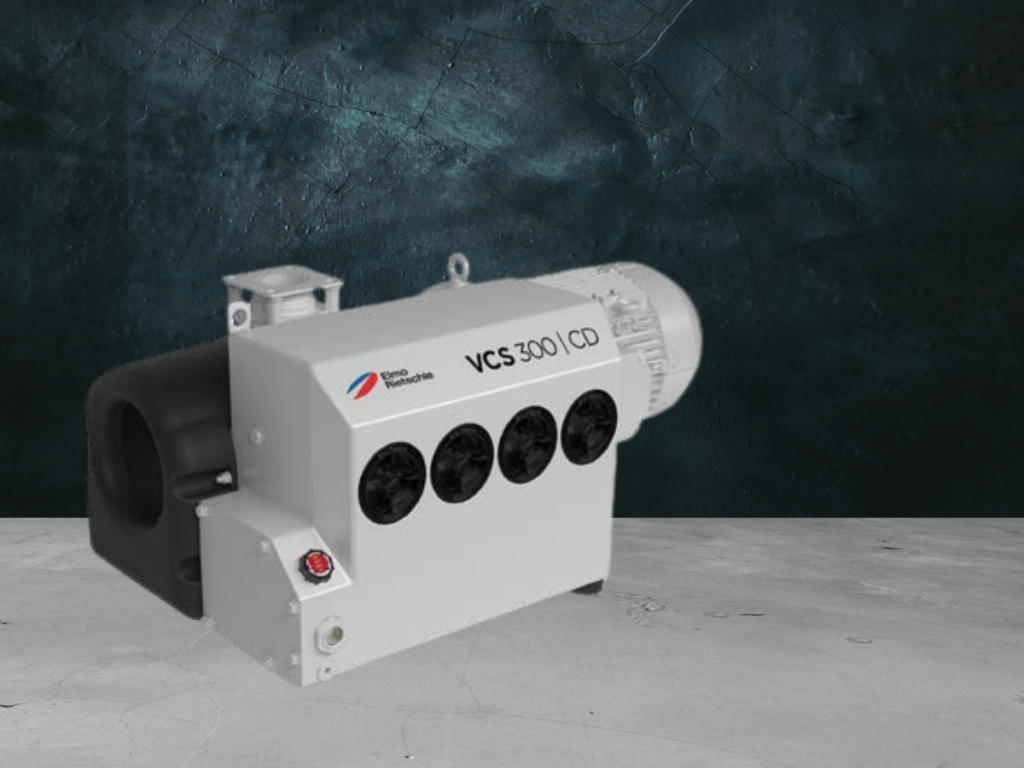Comparing Types of Vacuum Pumps, Benefits and Applications
Because vacuum pumps are used throughout the manufacturing sector, there are many types of vacuum pumps available to accommodate the wide range of industrial applications. While choosing the right vacuum pump can be challenging, selecting the most suitable technology is critical to achieving the best operational efficiency and performance. To simplify the selection process, we’ll compare the most commonly used industrial vacuum pumps, their benefits and some typical applications.

What is a Vacuum Pump?
Industrial vacuum pumps remove air and gas molecules from a sealed area to create and maintain a vacuum in manufacturing processes such as pick and place, degassing, packaging, drying, bottling and other applications where the pumps serve to clean and seal.
Although there are several types of vacuum pumps available, the basic operating principle is the same for most technologies in that vacuum pumps use compression to “push” air and gas molecules away, rather than “sucking” them out of the vacuum chamber.
Types of Vacuum Pumps
Vacuum pumps are available in a variety of technologies so when establishing a vacuum pump system, choosing the right technology for the operation is integral to achieving the greatest efficiency and performance levels.
While there are a host of types of vacuum pumps available, the most commonly used technologies for industrial applications include:
| Rotary vane | Rotary screw | Claw pumps |
| Rotary vane vacuum pumps feature a rotor positioned eccentrically with sliding vanes that press against the housing of the pump to trap gas and move it through the pump system. This type of vacuum pump operates via positive displacement, meaning it allows gas molecules to flow into a cavity, then seals it off and compresses the cavity to eject the gas. They are available in dry or oil-lubricated versions. | Rotary screw vacuum pumps consist of two parallel, screw-shaped rotors. The compression housing and the screws form the compression chamber. As the screws rotate, the chamber connected to the suction port is enlarged and the gas is transported into the compression chamber where it is compressed and discharged from the chamber. They are available in dry and oil-lubricated versions and operate via positive displacement. | Claw-type vacuum pumps feature two claw-shaped rotors that rely on a precision gear to move in opposite directions to create a vacuum. As the claw moves over the suction connection and the axial suction channel inlet, gas is pulled into the chamber, compressed and then discharged. This technology generates a “contact-free” vacuum in a very efficient and cost effective manner. Claw pumps are dry and operate via positive displacement. |
| Benefits of rotary vane vacuum pumps include low noise levels, low vibration, simple maintenance and the ability to achieve high vacuum with one compressor unit. | Benefits of rotary screw vacuum pumps include very low maintenance needs, very high energy efficiency, low noise and long service life. | Benefits of claw pumps include compact size, energy efficiency, quiet operation and high levels of reliability. |
| Applications for rotary vane vacuum pumps include degassing, distillation, drying, evaporation and other processes in chemical and pharmaceutical production; bottling and filling equipment and cutting machines in the food industry; packaging machines and pneumatic conveying systems in food and other industries; and dust extraction systems in industrial and woodworking processes. | Applications for rotary screw vacuum pumps include thermoforming and shaping of plastics; vacuum packaging and preserving in the food and pharmaceutical industries; packaging in modified atmospheres in electronics, food and pharmaceutical industries; and drying, degassing and filtration applications. | Applications for claw pumps include pneumatic conveying in the plastics industry; vacuum packaging in food and pharmaceutical production; thermoforming processes; pick and place robots; CNC machines; and plastic extrusion and molding. |
Selecting a Vacuum Pump
It’s critical to understand the needs of the application to properly determine the necessary specifications when selecting a vacuum pump. Pumping speed and throughput, as well as vacuum level requirements, are the most important selection criteria for a vacuum pump.
Pumping speed is the rate at which gas and air molecules can be evacuated from a space and is measured by the volume flow rate of the pump at its inlet. Pumping speed is usually expressed in volume per unit of time. The higher the pumping speed, the faster the evacuation time, making it a vital consideration for high-throughput industrial processes.
Throughput refers to the amount of gas that can be processed by the pump in a given period of time, meaning it measures the pump’s ability to effectively handle the gas load.
Vacuum level is the pressure within a vacuum system that is lower than the atmospheric pressure. Typically measured in Torr, this is an important consideration for industrial use as different manufacturing applications will demand different vacuum levels.
The three vacuum levels of industrial vacuum pumps are:
- Rough or low vacuum
- High vacuum
- Ultra-high vacuum
Typically, industrial vacuum pumps are ultra-high vacuum types, which fall into the pressure range of 10-7 to 10-11 mbar/7.5-7 to 7.5-11 Torr.
In addition, because most applications performed under vacuum are integral to the process, it is essential that vacuum pumps are sturdy and reliable, so it is recommended to purchase vacuum pumps from a reputable manufacturer, such as Elmo Rietschle.
Elmo Rietschle vacuum pumps are available in all the pump types discussed in this article, as well as other technologies and designs. The company’s vacuum pumps are engineered for efficiency, durability and reliability to support industrial applications.
JHFOSTER is an experienced Elmo Ritschle distributor, so please contact us today for assistance selecting and maintaining an industrial vacuum pump for your process.
